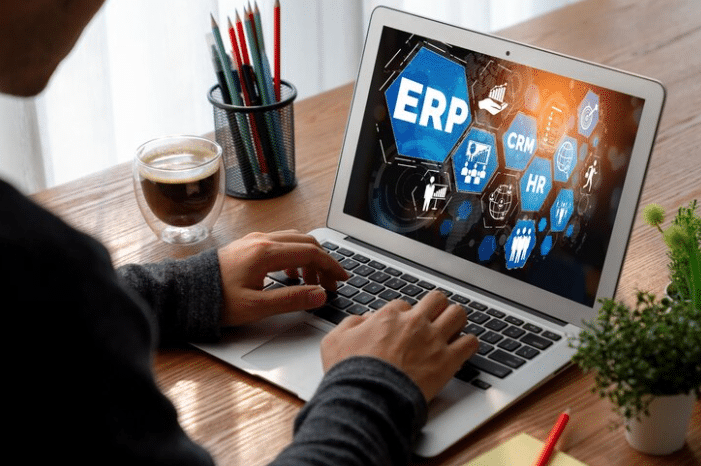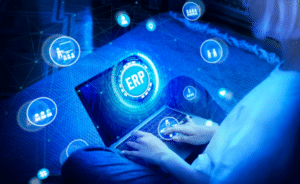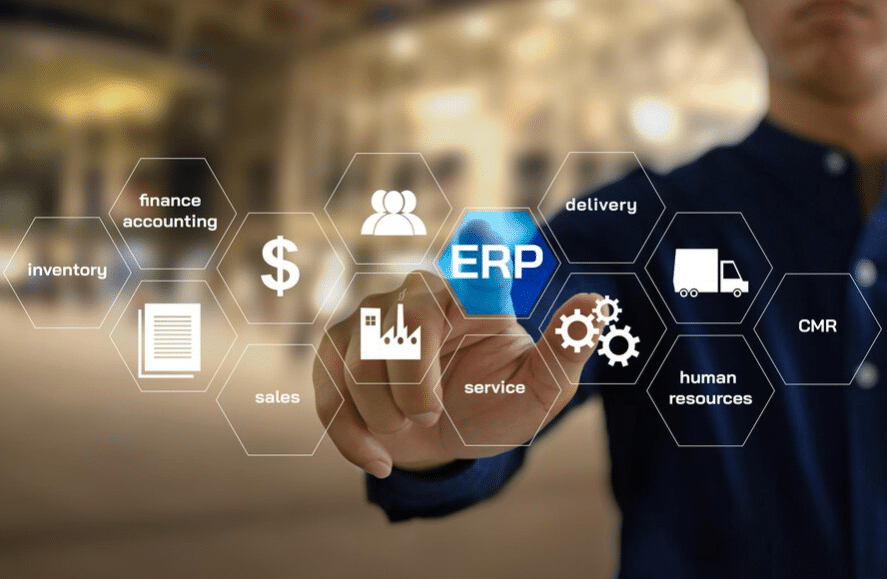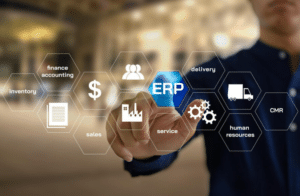ERP Online: Transforming Business Management in the Cloud
erp.balitteknologikaret.co.id |ERP Online, also known as Cloud ERP or Web-based ERP, is a modern and innovative approach to Enterprise Resource Planning (ERP) systems. Unlike traditional ERP systems that are hosted on-premises, ERP Online operates entirely in the cloud. This means that all the software and data needed for managing various business processes are hosted and accessible over the internet. Here’s a detailed explanation of ERP Online:

1. Cloud-Based Accessibility:
ERP Online eliminates the need for on-site servers and infrastructure. Instead, the ERP software and data are hosted on secure cloud servers. This allows authorized users to access the system from anywhere with an internet connection. Remote access is particularly valuable for businesses with distributed teams or those that require real-time access to data from multiple locations.
2. Scalability:
ERP Online systems are highly scalable. Businesses can easily adapt and expand their ERP usage as their needs evolve. Adding new users, modules, or features can be done with minimal disruption, making it suitable for growing companies.
3. Cost-Effective:
Traditional ERP systems often require substantial upfront investments in hardware and software licenses. In contrast, ERP Online typically operates on a subscription-based pricing model. This eliminates large capital expenditures and allows businesses to pay for the resources they use, making it cost-effective, especially for small and medium-sized enterprises (SMEs).
4. Automatic Updates:
Cloud ERP providers regularly update their software to incorporate new features, security patches, and improvements. Users of ERP Online systems benefit from these updates without the hassle of manual installations and updates. This ensures that the ERP system remains current and secure.
5. Data Security:
ERP Online providers prioritize data security. They implement robust security measures, including data encryption, firewalls, and access controls, to protect sensitive business data. This level of security often exceeds what many organizations can achieve with on-premises systems.
6. Disaster Recovery:
Cloud ERP providers have robust disaster recovery mechanisms in place. Data is regularly backed up and stored in multiple secure locations. This ensures that in the event of data loss or a system outage, businesses can quickly recover and resume operations.
7. Integration Capabilities:
ERP Online systems are designed to integrate seamlessly with other cloud-based applications and services. This fosters a more interconnected technology ecosystem within an organization, enhancing productivity and streamlining processes.
8. Real-Time Collaboration:
Cloud ERP facilitates real-time collaboration among team members, regardless of their physical locations. Multiple users can access and work on the same data simultaneously, enhancing communication and decision-making.
9. Accessibility on Mobile Devices:
Most ERP Online systems are accessible on various mobile devices, enabling employees to access critical information and perform tasks while on the go. This is particularly valuable for sales teams, field technicians, and executives who need instant access to data.
10. Vendor Support and Maintenance:
Cloud ERP providers offer ongoing support and maintenance. This means that businesses can rely on experts to troubleshoot issues, provide technical assistance, and ensure system uptime.
11. Flexibility and Customization:
ERP Online systems often allow for a high degree of customization to meet specific business needs. Organizations can configure workflows, dashboards, and reports to align with their unique processes and requirements.
12. Automatic Backups:
Cloud-based ERP solutions typically include automated backup and data recovery mechanisms. This ensures that critical business data is protected and can be restored in case of data loss or system failures.
13. Global Accessibility:
ERP Online is well-suited for businesses with a global presence. It enables seamless access to centralized data and processes for international teams, suppliers, and customers, promoting collaboration and consistency across borders.
14. Sustainability:
Cloud-based ERP systems often have a smaller environmental footprint compared to on-premises solutions. They reduce the need for physical hardware and data centers, leading to energy savings and a smaller carbon footprint.
15. Competitive Advantage:
Adopting ERP Online can provide businesses with a competitive advantage. It allows them to stay agile, respond quickly to market changes, and leverage the latest technology innovations without lengthy implementation timelines.
16. Data Analytics and AI Integration:
Many ERP Online systems incorporate advanced analytics and artificial intelligence (AI) capabilities. This empowers businesses to derive valuable insights from their data, predict trends, and make data-driven decisions.
17. Streamlined Maintenance:
Routine maintenance tasks, such as software updates and patches, are managed by the ERP Online provider. This frees up IT resources within the organization to focus on strategic initiatives rather than routine system maintenance.
18. Regulatory Compliance:
ERP Online providers often offer compliance features tailored to specific industries and regions. This helps businesses ensure that they meet regulatory requirements and industry standards effortlessly.
19. Vendor Expertise:
By choosing an ERP Online provider, organizations gain access to the expertise of experienced professionals who specialize in ERP technology. This expertise can be invaluable for optimizing system usage and achieving business objectives.
20. User Training:
ERP Online providers typically offer training resources and support to help users become proficient in using the system effectively. This ensures that employees can maximize the benefits of the ERP program.
In summary, ERP Online represents a modern and flexible approach to ERP systems that leverages the power of cloud computing. It offers accessibility, scalability, cost-effectiveness, and robust security while enabling businesses to stay agile, collaborate efficiently, and focus on core operations without the burden of managing on-premises infrastructure. The adoption of ERP Online is increasingly popular among businesses seeking to harness the benefits of cloud technology in their daily operations.








